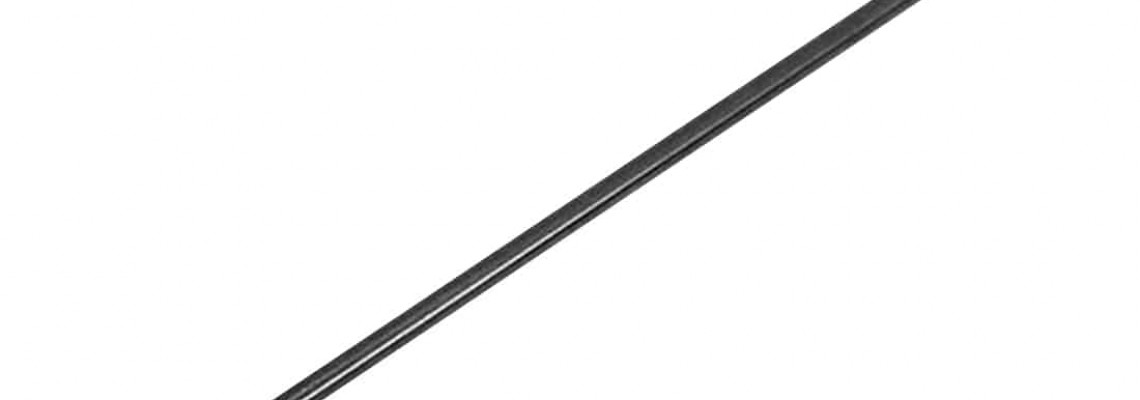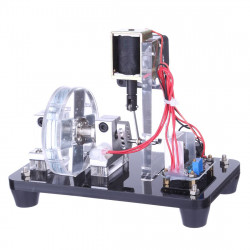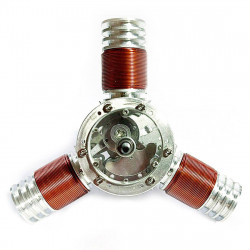
Why do so Many American Muscle Cars use PUSH ROD engines?
Although they cannot function at the same high engine speeds as overhead cam engines, OHV engines, also called pushrod engines, can produce a significant amount of torque at low engine speeds. Over the years, American manufacturers have extensively used them; OHC stands for overhead camshaft. Valve position development has significantly varied. Flathead valves were Ford vehicles' most common valve design before World War II.
To put it briefly, the intake and exhaust share a single valve mounted on the cylinder wall. In an era of nascent metallurgical technology, this type of structure is straightforward and practical, making it the preferred option for mature engines. However, it has been gradually removed from the market due to the congenital flaw of low thermal efficiency.
But the great majority of cars are made to be driven on the street. To achieve both low-speed and high-speed performance, multi-valve designs—which have more than two valves per cylinder—have progressively gained popularity. The OHC structure is home to the majority of these multi-valve engines. The superior fit between the overhead camshaft and overhead valves makes high- and low-speed operation possible.
What is the difference between OHV and OHC engines?
Since their valves initially seem to be overhead structures, there is no fundamental distinction between OHV and OHC. The camshaft position, however, is the primary distinction between OHV and OHC.
The OHV transfers the camshaft to the cylinder in contrast to the OHC overhead camshaft. The camshaft is often situated above or to the side of the crankshaft in an inline OHV. The camshaft is positioned at a V-shaped angle in a V-shaped OHV. As a result, OHV engines are also known as pushrod or I-head engines.
The OHV engine's valve structure is more complex because the camshaft and push rod need to be coupled to drive the valve to open and close. The OHC engine's valve train is significantly simplified because the overhead camshaft pushes the valve directly rather than using a pushrod construction.
What are the advantages of an overhead valve?
1. Compact structure.
Due to the ability to position the camshafts at a V-shaped angle, OHV engines are renowned for their compact design. For instance, compared to its predecessor, the 5.0L Windsor Series V8 (OHV), Ford's (OHC) Modular Series V8 boasts a bigger 4.6L overhead camshaft.
2. Simplify the drive structure.
In overhead camshaft (OHC) engines, a timing belt or chain drives the camshafts, and tensioners are also needed for these drives. As a result, the entire system becomes more complex. OHV engines, on the other hand, only need a short chain or belt, occasionally joined by gears, because the crankshaft and camshaft are closer together. However, intricate valve structures might occasionally outweigh this benefit.
3. Good for maintenance.
More effective adjustments can decrease maintenance effort With hydraulic lift arms.
4. Large displacement.
Because of its design, the OHV can produce more torque by delivering a higher displacement in the same amount of area.
What are the disadvantages of OHV engines?
First, OHV engines do not like to run at high speeds.
When it's running, its speed is limited. When the engine runs at high speed, it will be damaged. The intricate valve structure means that the OHV cannot keep up with the engine's breathing cycle at high revs as the valve opens and closes. The high RPM may cause the OHV engine valve to rupture or fail to close. For this reason, manufacturers would instead focus more on the output at low speeds throughout the tuning process.
The racing version of an OHV engine is often around 10500 RPM, while the civilian version is typically limited to 6000–7000 RPM. However, the racing version of an OHC overhead camshaft engine can easily exceed 20000 RPM, while the civilian version can only reach 7000-9000 RPM.
A loud noise comes in second.
Because the push rod requires a complicated set of valve components and because the shape and size of the valves are constrained, an OHV engine is frequently designed with two valves. In addition, the OHV engine produces much more noise than the OHC engine.
Third, the OHV dual valve's backward design has a significant advantage at low speeds, where it can provide enormous torque. In contrast, the multi-valve is worthless at low speed.
How does an OHC engine work?
A chain or belt drives the OHC camshaft at the top of the cylinder and is connected to the engine crankshaft. A cam on the camshaft pressing the rocker's arm turns the valve on and off. The spring causes the valve to close when the camshaft leaves the rocker's arm. The cam then compresses the rocker arm once more, causing the valve to open. Furthermore, the duration of valve opening and shutting, lift, opening time, and other parameters can be controlled by the VVT, VVL, and other methods.
How does an OHV engine work?
In contrast to the OHC, the OHV camshaft, also powered by the crankshaft, can be positioned below or in the engine's center. The cam follower, also known as a valve tappet or connector, makes contact with the camshaft cam. It follows the cam's form. Like the valve rocker arm, the tappet is forced to raise when the camshaft rotates. The valve opens when the push rod's other end presses on the rocker's arm after being moved up and down by the tappet. The rocker's arm functions similarly to a lever. The tappet pushes upon one side, and the other side moves in tandem.









